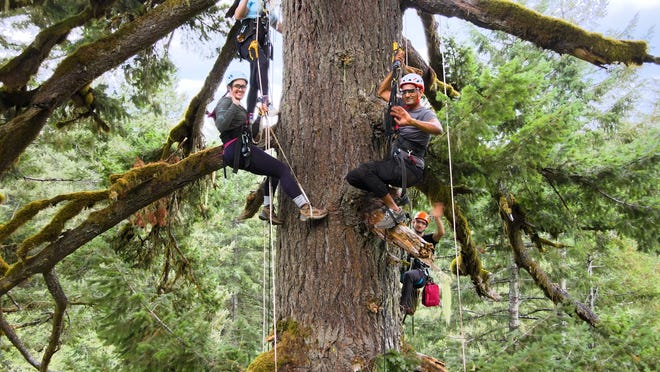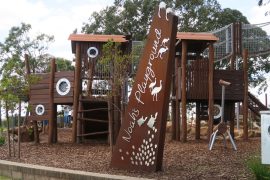Unleash the Adventure: Tree Climbing for Kids!
Hey there, amazing parents of little adventurers!
Are you looking to infuse some classic outdoor fun into your child’s life? Tree climbing is not only a delightful pastime that harkens back to simpler days but also a fantastic way for kids to build strength, confidence, and an appreciation for nature! So, grab your adventurer’s hat, and let’s explore the wonderful world of tree climbing together with this handy guide on how to climb trees safely and joyfully!
Why Tree Climbing?
Tree climbing is more than just an exciting activity. It’s a gateway to endless benefits for your youngsters, including:
- Physical Fitness: Climbing trees is akin to a full-body workout. It enhances muscular strength, flexibility, and coordination.
- Problem Solving: Figuring out which branches will hold weight and the best paths upward challenges young minds.
- Increased Confidence: With each climb, your child’s confidence will soar higher than the tree-tops!
- Respect for Nature: What better way to fall in love with the outdoors than to climb and bond with a tree?
Selecting the Perfect Tree
Now, not every tree is suitable for climbing. Here’s what to look for in an ideal tree for your little climbers:
- Strong, Healthy Branches: The tree should have robust branches that can support your child’s weight. Look for live branches that are at least as thick as your child’s thigh.
- Tree Health: Avoid trees with signs of disease or decay—healthy trees are the way to go!
- Clear Surroundings: The area around the tree should be clear of obstructions or potentially harmful objects in case of falls.
- Soft Ground: Grass or mulch beneath the tree can reduce the risk of injury.
- Accessibility: Ensure there are lower branches that children can reach to start their climb safely.
Essential Gear for Safe Climbing
Just like superheroes need their gear, little climbers need theirs too! Here’s what to gear up with for safe tree climbing:
- Gloves: A pair of well-fitted gloves can protect your child’s hands from scrapes and provide better grip.
- Sturdy Shoes: Closed-toed shoes with good treads will help prevent slips and falls.
- Helmet: A helmet can be a good precaution, especially for beginners or when climbing higher trees.
While we’re talking about getting our gear right, don’t forget the most crucial piece of equipment—adult supervision! Always have an adult present to guide and support the young climbers.
Teaching Tree Climbing Basics
Even Tarzan started with the basics! Before your kids begin scaling their leafy friends, make sure they know the following:
- Three Points of Contact: Teach them to always have three limbs in contact with the tree to maintain balance and support.
- Test Before Trust: Advise them to give a gentle tug on branches before putting their full weight on them.
- Use Their Legs: Climbing is often easier when pushing up with their legs rather than pulling up with their arms.
We’re all set for our tree-climbing adventure, but before your kiddos scamper up, let’s reflect on the importance of respecting our leafy hosts.
Respect for the Trees
Teach your children the “Leave No Trace” principles to ensure they understand the importance of preserving nature’s beauty. Remind them to:
- Avoid breaking branches or stripping leaves.
- Climb trees with sturdy, established routes to minimize damage to delicate ones.
- Not litter around the tree area and to take care of the surrounding environment.
Tree climbing can be an enriching experience for children, offering them a unique window into nature’s playground. By ensuring they’re climbing safely, with the right tree and gear, and with a mindful attitude towards the environment, you’re fostering a hobby that’s not only fun but also full of learning and growth.
As we wrap up this initial climb into the world of tree-mounted escapades, remember this: climbing trees fuels imagination, encourages physical activity, and cultivates a special connection to the natural world. Let’s make sure this tradition continues to branch out for generations to come!

Five Essential Prep Tips for Young Tree Climbers
Before your little munchkins tackle their first barky ascent, there are a few things you, as their awesome support team, should know:
- Assess the Weather: Just like sailors scan the skies, check the weather forecast before allowing climbs. Wet conditions can make bark slippery and risky!
- Stay Within Comfort Zones: Encourage your children to climb only as high as they feel comfortable. Thrills are good, but safety reigns supreme!
- Pre-Climbing Checklists: Create a routine! Check the tree’s health, weather conditions, and the proper fit of all gear before each climb.
- Emergency Readiness: Have a plan in place for emergencies. This includes having a first aid kit handy and knowing the quickest way to get medical help if needed.
- Environmental Education: Empower your kids with knowledge about the local flora and wildlife to enhance their sense of responsibility towards the environment.
Climbing Etiquette and Safety
When hitting the great outdoors, teaching our fledgling climbers the dos and don’ts is crucial for their safety and for the respect of nature. Here’s the scoop:
- Keep Eyes Peeled: Vigilance is the name of the game. Always keep an eye on your child, even if they’re confident climbers.
- Manners Matter: Climbing can be a shared joy, so teach children to take turns and be considerate of others who might want to climb the same tree.
- Wildlife Wonders: A tree might be a home to birds or squirrels. Teach kids to be observers, not disturbers, of these natural habitats.
- Wildlife Wonders: A tree might be a home to birds or squirrels. Teach kids to be observers, not disturbers, of these natural habitats.
- Down-to-Earth Descent: Remind the kids that coming down is usually harder than going up. They should take their time and come down the same way they went up.
In Case of Tumbles: Handling Falls
In an ideal world, every climb would be flawless, but it’s best to prepare for the occasional slip:
- Stay Calm: If a fall happens, stay calm. Your reaction sets the tone for your child’s response to the incident.
- Basic First Aid: Know your ABCs – airway, breathing, compression. A quick assessment will tell you how serious the fall is.
- Comfort is Key: Provide comfort and reassurance. A little TLC goes a long way towards recovery from a scare or a bruise.
Creating Lasting Memories
Tree climbing is rife with moments that will stick with your child for life. Make each climb a story worth telling:
- Capture the Climb: Document your child’s climbing milestones with photos or a climbing journal.
- Tree-tastic Traditions: Develop climbing traditions, like a special call to celebrate reaching new heights or a family picnic post-climb.
- Share the Love: Encourage your little ones to share their climbing adventures with friends, spreading the love for this timeless activity.
There you have it, super parents! With your guidance, tree climbing can be transformed from a playful pastime into a launchpad for learning and lifelong memories. Get ready to watch your youngsters reach new heights, and remember – the sky’s the limit when it comes to cultivating your child’s sense of adventure. Happy tree climbing!
For more great fun click here. For more information see here
Disclaimer
The articles available via our website provide general information only and we strongly urge readers to exercise caution and conduct their own thorough research and fact-checking. The information presented should not be taken as absolute truth, and, to the maximum extent permitted by law, we will not be held liable for any inaccuracies or errors in the content. It is essential for individuals to independently verify and validate the information before making any decisions or taking any actions based on the articles.




